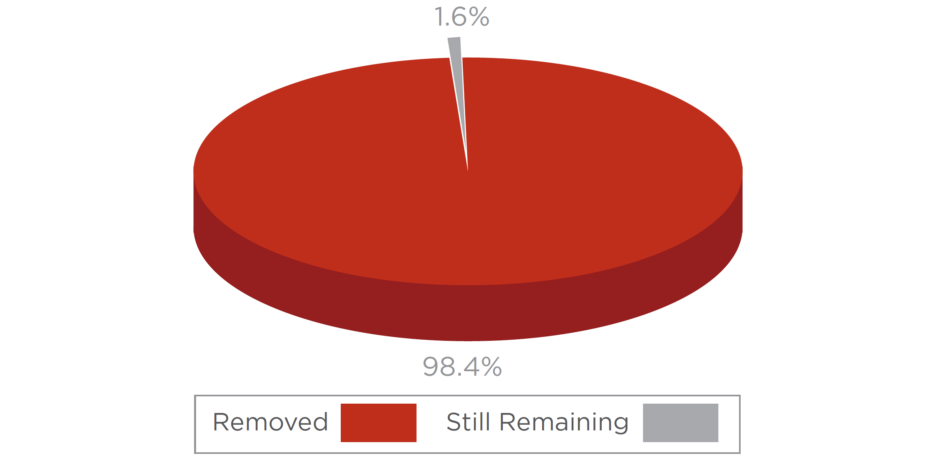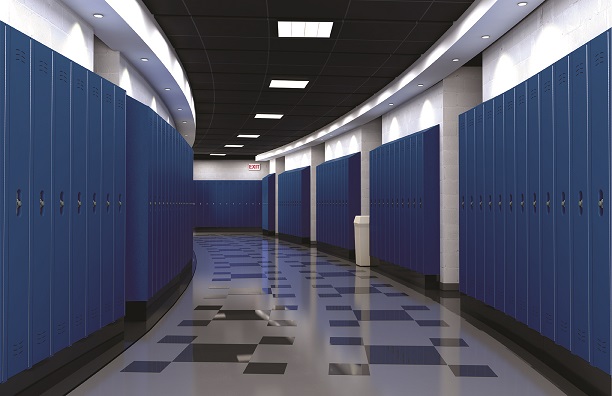Are you looking to perform some much-needed renovations in your school? While repainting the walls or having the HVAC system inspected can be useful, what about replacing your lockers with a better material? Schools all across the country have been installing HDPE (high-density polyethylene) lockers throughout their school’s halls and corridors, and have been met with great results. So, here’s a list of the 10 reasons why you need HDPE lockers in your school…
1. Nicer Aesthetics
HDPE comes in homogenous color patterns that you can choose from. They can be tailored to match any design that you’re going for with your school. While lockers can be painted over, do you really want to go through the painstaking task of painting each individual locker in your school?
2. Noise Reduction
The pang of a metal locker slamming shut is enough to remind anyone of their days at school. However, HDPE lockers have a much softer sound. During a test using both an HDPE locker and a metal locker, the sound of an HDPE locker closing was three times softer than that of a metal locker’s sound. The lack of the sharp smack will be more pleasant to the ears of both students and faculty.
3. Durability
While metal lockers have a strong structure, they’re susceptible to a variety of cosmetic damages like scratches and dents. HDPE lockers, on the other hand, are made into a solid plastic construction. They’re highly durable and can take an impact without resulting in exterior damages or scratching.
4. HDPE Doesn’t Rust
A common problem that affects metal lockers is rust. Humidity and moisture can build up, especially near the end of the school year, and sooner or later, the lockers will begin to rust. This is a looming problem in locker rooms, due to the numerous sources of water. HDPE doesn’t absorb moisture, so it won’t rust or sprout mold.
5. Improve Your Air Quality
As we mentioned before, HDPE doesn’t rust, and it can repel humidity and moisture. It won’t sprout mold, which would have a negative effect on your school’s air quality. HDPE also doesn’t need to be repainted, which reduces the risk of VOC (volatile organic compound) emissions from contaminating your school’s air.
6. Easy Installation
Metal lockers require a lot of care and attention when they’re being installed. HDPE lockers, on the other hand, are a quick and simple setup that won’t require a lot of time and effort. By comparison, it takes less time to install HDPE lockers than metal ones.
7. More Secure Storage
Another major benefit to HDPE lockers is that they’re more secure. Metal lockers do have their weaknesses, and students will figure out those weaknesses to gain entry to a locker that isn’t theirs. HDPE lockers have a built-in lock, and you also have options of what type of lock you want, with either inset combination locks or hasps being easily configured into the locker, providing a secure storage compartment for students.
8. Low Cost Maintenance
One of the biggest advantages of choosing HDPE lockers over metal is the lack of serious maintenance that you’ll have to do. Because of their durability, HDPE lockers don’t require extensive repairs. In fact, they just need a simple cleaning every now and again. A simple wipe can even remove unwanted graffiti.
9. Big Return on Investment
On the surface, HDPE lockers may seem like a pricier option. However, due to their strong construction and low maintenance, they simply pay for themselves. Within two years, HDPE lockers will be less expensive than metal lockers, due to the constant maintenance that metal lockers require. They’ll even outlast metal lockers, so you won’t have to worry about a replacement for at least 20 years.
10. Sustainability
Did you know that HDPE plastic is made from recycled materials? Because of the post-consumer materials, and their durability and lifespan, HDPE lockers are 100% sustainable. If you’re considering going greener, or becoming LEED Certified, choosing HDPE lockers is a huge step in the right direction.
Want to hear about more reasons why you should get HDPE lockers for your school? Check out Duralife Lockers now!



